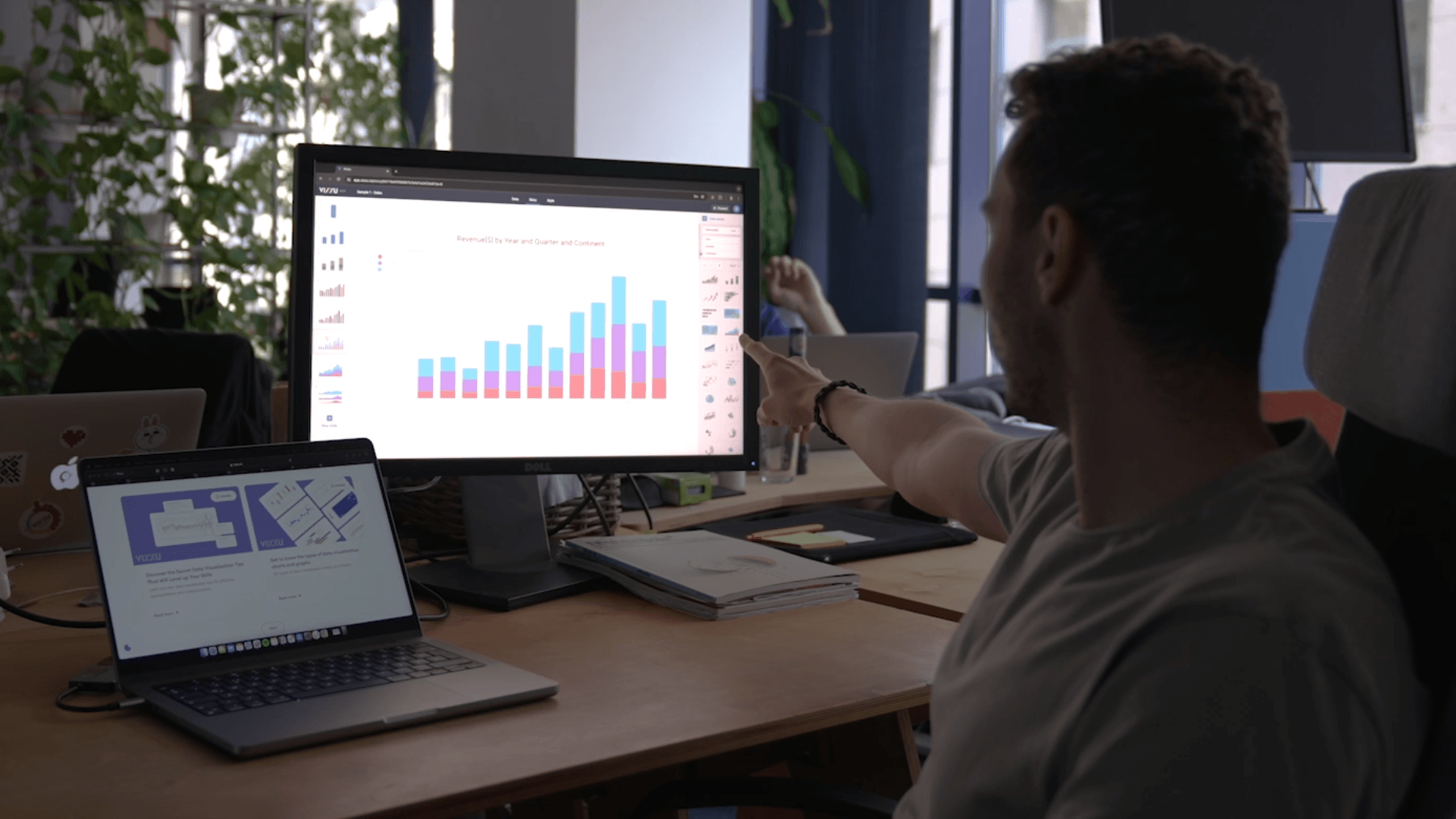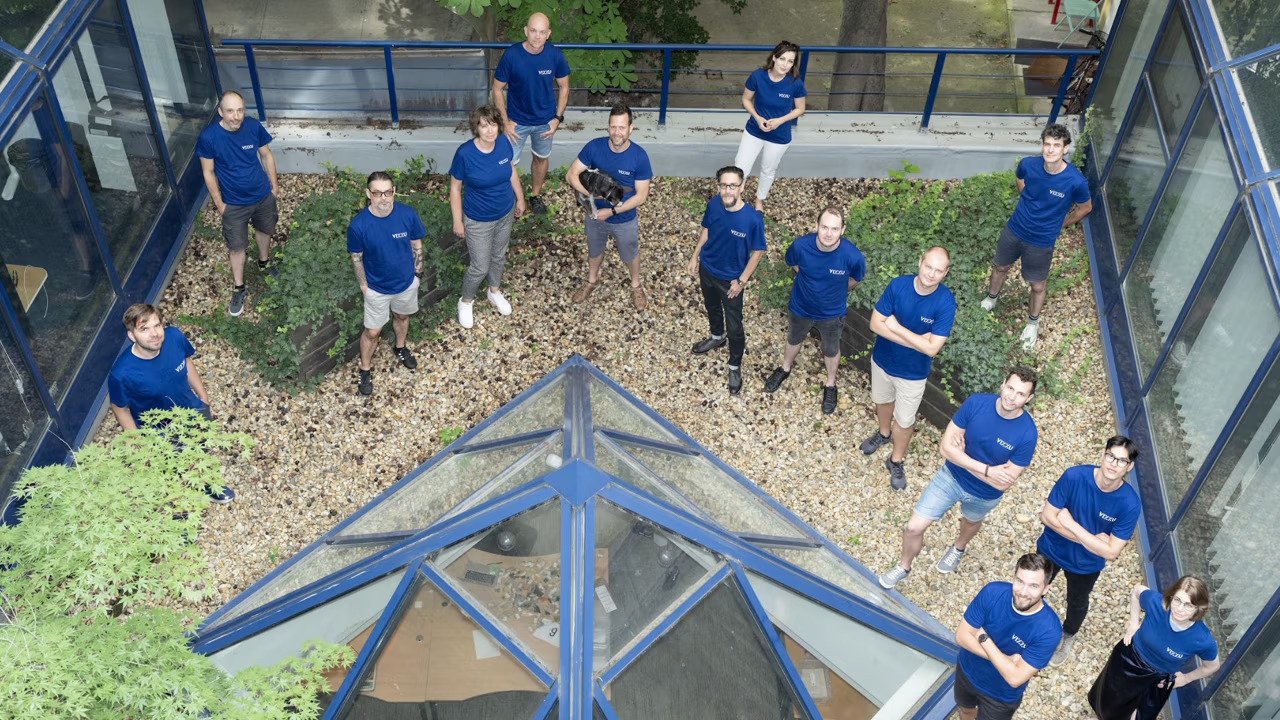Data analysis has a problem. Most data today is presented through static charts and dashboards, but these often fall short when it comes to engaging audiences or guiding them toward clear insights. Complex datasets can overwhelm viewers and users without technical backgrounds, while disconnected visuals make it difficult to follow the story behind the numbers.
Founded in Hungary, Vizzu aims to create tools that help people analyse data without needing spreadsheets or pivot tables — instead, they can “fiddle with charts” to understand what’s going on, and then build presentations to share. It’s designed to help teams (e.g., product, finance, strategy) present data clearly and persuasively in live settings, such as board meetings or investor updates. I spoke to co-founder and CEO Péter Vidos to learn more.
Vizzu turns your data into a guided, animated story. According to Vidos, the old data paradigm is that you make a chart when you already know what you want to show.
“You don’t visualise raw data — you visualise pre-aggregated, pivoted tables. Tools like Canva, Infogram, Flourish, or even Excel and Google Sheets are great for that. But with Vizzu, you drop in raw data, and then pivot, analyse, and explore it directly in the chart.
Without animation, you lose track of what changed. That’s why we built our own visualisation engine — no existing library supported this."
Vizzu co-founders András Kangyal and László Simon developed a general theory of chart morphing and built the engine that put this theory into practice.
"In our world, every chart is essentially the same, just configured differently. That’s why you can smoothly animate between chart types,” explained Vidos.

13,000 signups, but retention challenges push Vizzu to rethink
As a company, Vizzu has had an interesting journey, with some valuable lessons for early founders. After its first funding round in 2021, Vizzu built open-source coding interfaces around the engine — a JavaScript charting library and a Python wrapper.
Using Vizzu, users could switch chart types, stack or unstack data, and vary the filter. For example, a user can upload a 10,000-row dataset of global sales. They can select “quantity sold” and see it aggregated by year. If they add “quarter,” they get quarterly data.
“You’re exploring and combining data visually — and the tool saves every chart you generate. That becomes your presentation. Once you’re done, you just remove the irrelevant bits, and you’re ready to present, ” explained Vidos.
Data scientists began using it to present their findings to non-technical audiences, which earned the founders speaking invitations at conferences. The open-source phase also attracted investor attention, leading to a $1.5 million round led by Interactive Venture Partners with participation from Two Sigma.
The funding provided the resources to build a browser-based tool for non-technical users. However, the team released a free beta in 2024, and while it had over 13,000 registrations, Vidos admits that retention was lower than expected.
“People found the paradigm shift — analysing raw data directly — harder than we thought. Some said, “I wish I had the data to use this,” even though they did. So we realised we needed to lower the barrier even further.”
In response, Vizzu added GenAI features to automatically generate insights, highlight key points in charts, and enable users to generate charts from written prompts , as well as introduce templates. Vidos detailed:
“For example, you can export your Uber history as a CSV, drop it in, and Vizzu automatically generates a story of your rides and spending. You can then filter by city, year, or month. It’s a UX-first approach: making it super easy for anyone to get immediate value.”
Vizzu chooses transparency and trust in tough times
Like all startups, Vizzu is not immune to the challenges of fundraising. Vidos admits that the company learned that traction alone isn’t enough — investors want revenue.
“We couldn’t raise a new round under current conditions, so we had to shift. Some developers moved to part-time, and a few left, but we actually made more progress in refining UX in the past months than before.
We’re now focusing on professional services — building custom data stories and presentations for clients — and pursuing OEM partnerships to integrate Vizzu into other platforms.”
In turn, its investors provided support. Angels provided bridge funding, and US-based investors helped the team to secure paid projects.
Vidos asserts, “The goal is to prove business value and generate revenue quickly, without being dependent on external funding.”
Ultimately, transparency has been paramount during this process, with management displaying a level of integrity not always present in early-stage founders.
Vidos explained:
“We’ve always told the team openly about our runway, investor reactions, and challenges. That created trust and community — even ex-employees still come to company gatherings.
We also refused an investor's demand to do sudden, harsh cuts without warning. We’d rather go down with integrity than compromise on values. It’s about respecting people and building long-term relationships.”
Vidos admits that many founders treat themselves differently from their teams, but he sees all team members “in the same boat.”
“If someone has to leave for personal reasons, like family, we part on good terms. For me, that’s more important than squeezing a few more months of work from someone without pay.”
The challenge of building world-changing innovation from Eastern Europe
Ultimately, Vizzu isn’t just incremental innovation. It’s a paradigm shift in how people work with data. Vidos believes this is harder to build from Eastern Europe, where ecosystems tend to favour incremental B2B efficiency tools.
“But we believe we have a world-changing innovation at the core. Sometimes we’ve had to “hide” the groundbreaking nature behind simpler narratives — like “this is a storytelling tool for data scientists” — because that’s easier for investors to grasp.
However, the potential is much greater, and we firmly believe in this approach, as do our investors and community. With the right support, Vizzu can fundamentally change how people explore, analyse, and communicate with data.”



Would you like to write the first comment?
Login to post comments